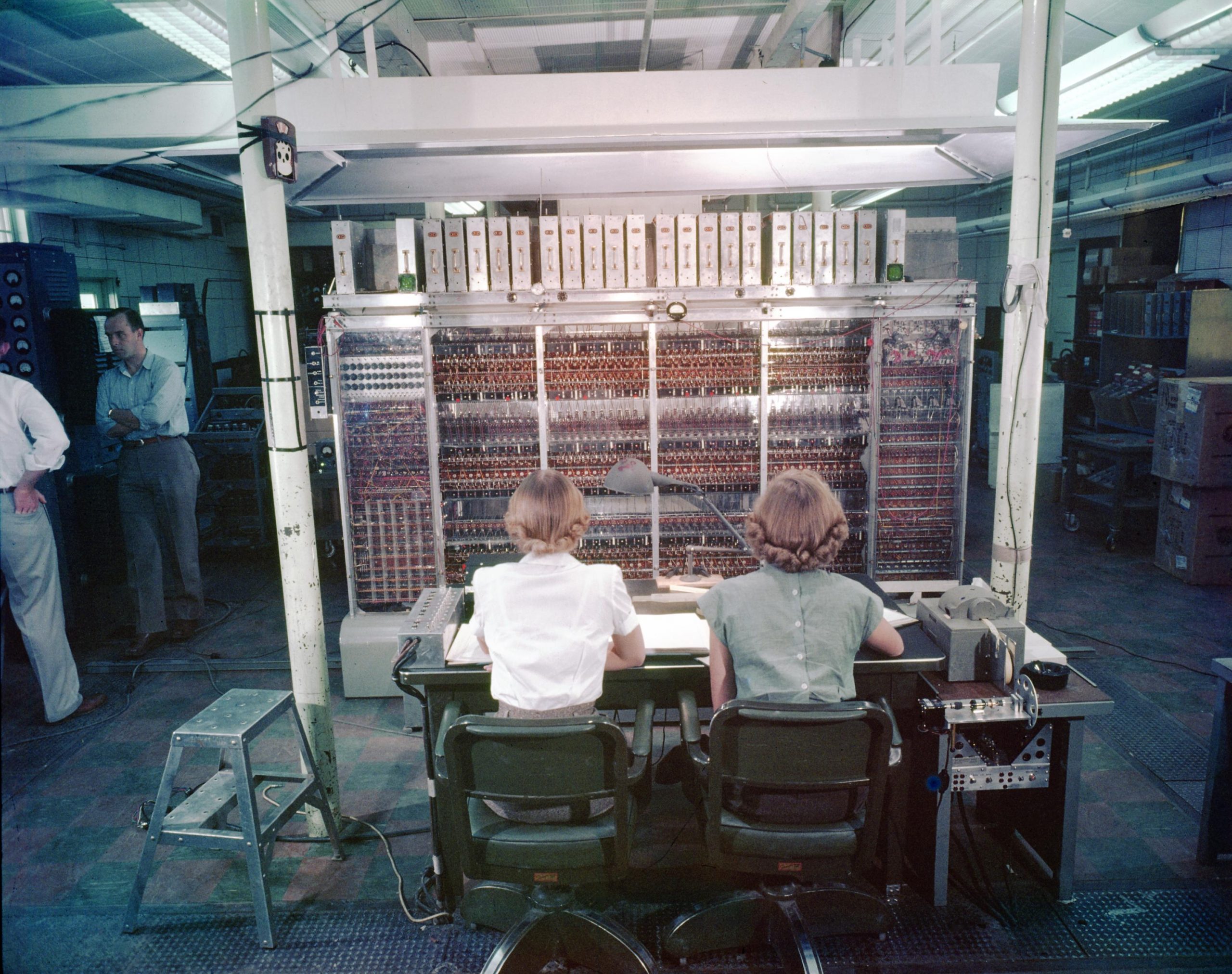“I was a computer,” recalls Jean Bacher, describing her work at Los Alamos, NM during the Manhattan Project. As retired Los Alamos National Laboratory physicist James L. Smith explains, “The word ‘computer’ didn’t exist then. Instead, the women doing calculations with mechanical calculators were known as ‘computers.’”
The Atomic Heritage Foundation (AHF) is pleased to launch a new online interpretive program, “Los Alamos Innovations,” with 50 audio/visual vignettes. The program addresses the technologies developed at the Manhattan Project’s weapons laboratory in Los Alamos, NM, and their lasting impact on modern science and society. The program is part of AHF’s “Ranger in Your Pocket” series on the Manhattan Project, which focuses on former Manhattan Project sites and features vignettes with eyewitness accounts and expert commentary.
Scientists and engineers created 5,600 different inventions relating to the atomic bomb, resulting in some 2,100 separate U.S. patent applications filed in secret during the war. “Los Alamos Innovations” describes how Manhattan Project workers adapted various technologies, many of which were then in their infancy, as they worked to build the world’s first atomic bombs. After the war, Los Alamos National Laboratory (LANL) continued research into computing, health physics, and other fields that grew out of or contributed to the Manhattan Project.
The program highlights the challenges Manhattan Project scientists faced in building a first-of-a-kind weapon they believed would help end World War II. Laboratory director J. Robert Oppenheimer recalls designing the “Fat Man” or implosion bomb: “I think the set of problems connected with implosion was the most difficult. It required very new experimental techniques.” As nuclear archaeologist John Coster-Mullen cautions: “They didn’t know if any of this was going to work. This was all a big, giant experiment.” Because of these concerns, Manhattan Project leaders decided to test the “Gadget” at the Trinity Site on July 16, 1945.
To record the Trinity Test, the Optics group developed new high-speed photographic techniques. Berlyn Brixner and other members of the photography team set up 50 cameras, most of them high-speed motion picture cameras. Brixner says, “We got a complete record with those motion picture cameras of the whole explosion. Something like 100,000 pictures were taken.”
Designing and engineering the atomic bombs required complex, intricate mathematical calculations. Early IBM calculating machines, bulky forerunners of modern computers, arrived in spring 1945. Manhattan Project physicist Nicholas Metropolis explains, “When the IBMs came along, we converted them into doing a lot of problems.” Stanley Hall recalls using punch cards for programming: “You can do things now that you wouldn’t even think of doing back then. There wouldn’t be room in the house for all the cards.”
Little was known about the health risks posed by radioactive materials when the Manhattan Project began. Manhattan Project physician Louis Hempelmann states, “The field of radiation biology was almost unknown. We had an idea of what was going on, but it was pretty primitive.” He describes how the Manhattan Project modeled its initial radiation protection protocols after those developed by the radium dial painting industry. Other vignettes discuss radiation detection instruments such as the Geiger counter, the Human Genome Project, and the use of radioisotopes in medical tests and treatment today.
The program also sheds light on some of Los Alamos’s less well known innovations. The water boiler reactor, built at Los Alamos over the winter of 1943–44, was the world’s first homogeneous liquid-fuel reactor. In one of the vignettes, Gerhart Friedlander recalls one of his proudest moments: winning a 25-cent bet from Nobel Prize winner Enrico Fermi over which uranium salt should be used. After the war, LANL physicists expanded the reactor for criticality and fission experiments.
As a multidisciplinary laboratory, the Los Alamos laboratory conducts research in many fields, not just on nuclear weapons. However, as MIT historian of science David Kaiser explains, “The word “nuclear” applies to many types of things. People who were not working on weapons per se have had to contend with the connotations of the word nuclear, for good or for ill, for many years.”
As “Los Alamos Innovations” shows, the technologies developed at Los Alamos during and after World War II have been a double-edged sword. Nuclear weapons continue to threaten the world today, while nuclear medicine saves countless lives. Debate continues over the decision to use atomic weapons against Hiroshima and Nagasaki, and the benefits and risks of using nuclear reactors to generate power. Computing and high-speed photography have had an immeasurable impact on science and society over the past 75 years.
Richard Rhodes, the Pulitzer Prize-winning author of The Making of the Atomic Bomb, sums up the significance of the discovery of nuclear fission in the late 1930s: “The discovery of how to release the energy locked up in the nuclei of atoms was a discovery as momentous as the discovery of fire.” From atomic bombs to health physics to nuclear reactors, these technologies will continue to shape the world for many decades to come.
“Los Alamos Innovations” was developed in partnership with the Institute of Electrical and Electronics Engineers (IEEE) Los Alamos/Northern New Mexico Section and funded by the IEEE Foundation. AHF is very grateful to them and to our other partners including the Los Alamos Historical Society, the National Museum of Nuclear Science and History, and the Los Alamos National Laboratory archives team. Articles on detonators and electronics, high-speed photography, and the water boiler reactor are available on AHF’s website.





